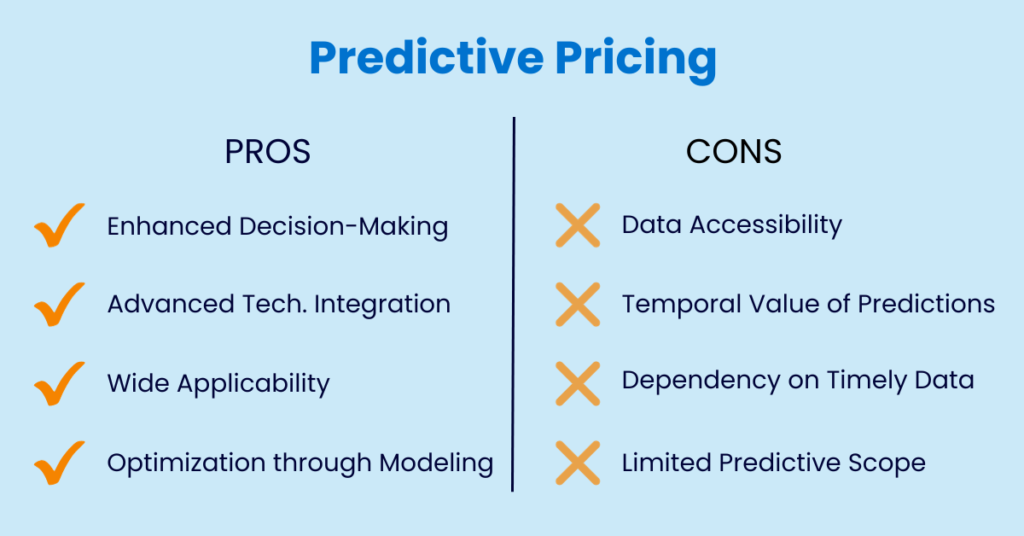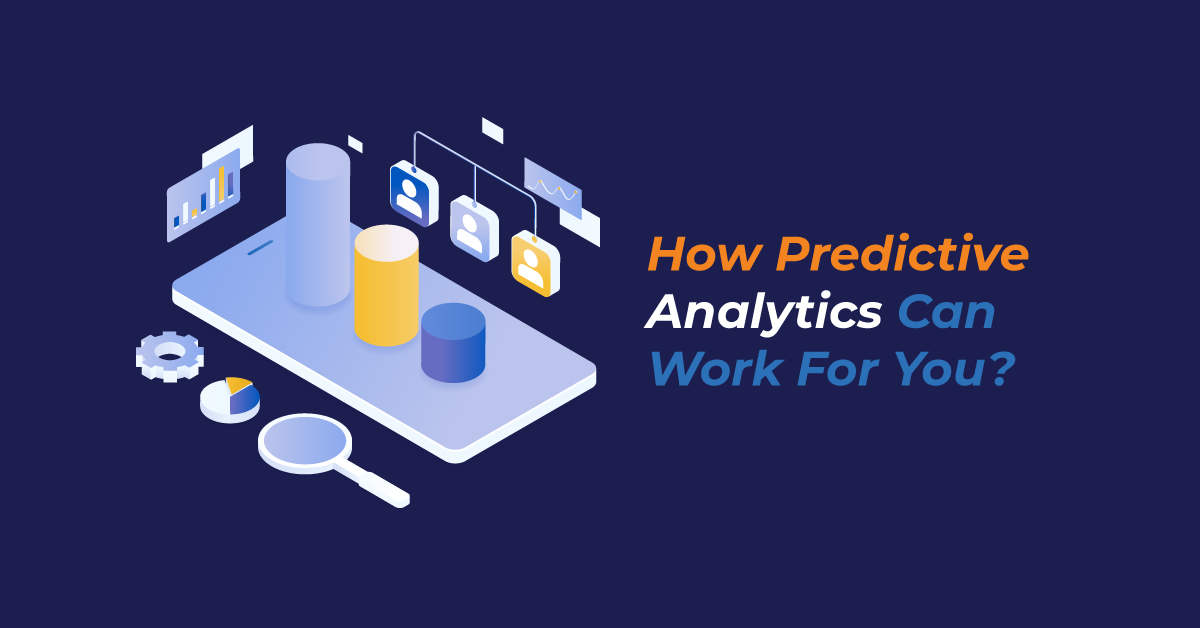With the introduction of AI and machine learning predictive analytics market is growing. Predictive Pricing analytics is the process of collecting, organizing, and using a massive volume of data to draw conclusions which can contribute to profitable results. The predictive pricing analytics can be used by the sales and marketing departments to develop new pricing strategies or promotional activities for generating sales as per the market trends.
What is Predictive Pricing Analytics?
Predictive pricing is based on the data so it can be termed as a data-driven strategy. Companies set prices depending on the collected and analyzed data. Pricing predictive analytics makes use of modern technology for collecting data and making forecasts to help business leaders set prices at a level where profit and revenue can be optimized based on existing market dynamics.
Some companies use predictions for setting prices which are subject to change. Predictive pricing is a type of dynamic pricing. It includes the use of AI, data mining tools and machine learning. The process is automated and performed without any human intervention.
Predictive pricing is at the intersection of the data science and business strategy which uses historical data along with predicting pricing analytics techniques. As a result, businesses can forecast the demand effectively and optimize the price of their products.
Process of Predictive Pricing
Predictive price optimization leverages predictive analytics as it helps them determine the market trends, customer behavior and competitive forces along with other factors that influence the price. The collected data is used for developing a pricing model which enables a business to adjusting the price points.
1. Data Collection
The predictive AI pricing analytics process begins with collecting data from different sources like sales records, customer behavior, existing market trends and competitive intelligence. This data acts as a foundation for creating the predictive pricing model. Businesses can use a variety of tools for collecting the data such as web scraping, data mining, machine learning algorithms, predictive analysis, and more.
2. Data Processing
After the data is collected, it undergoes the process of cleaning, structuring, and organizing so that the data becomes suitable for analysis. Duplicate files are also removed in this step along with normalizing the data to ensure consistency.
3. Feature Engineering
It is the process of selecting and creating features from sets of data. It helps in making sure that relevant information is used in the predictive pricing analytics. Machine learning modules figure out the similarities or patterns in the data. They extract relevant features from data and help the business understand the relation between various variables and their impact on pricing.
4. Model Training
In this step, a predictive pricing algorithm is trained with the help of pre-processed data. The algorithm learns from the data by gauging the patterns between different variables and prices. This training helps the algorithm in making accurate predictions regarding future prices depending on the input data.
5. Price Forecasting
With the help of a well-trained model, the system generates price forecasts on the basis of existing market conditions and input data. It helps determine the optimal price points for products and services.
6. Price Adjustment
In this step of predictive pricing analytics, the pricing forecasts are used for adjusting the price in real-time. Based on the company’s pricing strategy, the prices are adjusted and updated manually/ automatically with the help of pricing software.
How to Implement Predictive Analytics in Business
1. Price Optimization
Price optimization consists of analyzing customer buying patterns and determining the price point that leads to revenue growth. Predictive pricing analytics takes into consideration a few factors such as market condition, competitor pricing, customer demand, etc. for serving their customers the best possible price.
2. Promotion Optimization
With the help of predictive analytics, businesses can make use of historical data to decide the impact of past promotions and prepare well for future promotions to save costs and optimize their revenue. Collecting data helps a business meet promotional demands.
3. Supply Chain Management
Predictive analytics can help businesses with supply and demand forecasting along with optimizing the logistics and transportation and improving customer service. The historical data is analyzed to predict the products with high demand and the prices buyers are willing to pay for them.
4. Marketing
The predictive analytics for pricing strategies can be used for audience and customer segmentation on the basis of how they react to the advertisement campaigns. There are leading brands that integrate technology to predict market trends in advance which enables them to develop products that meet customer expectations. Data analytics can also help with churn prediction, lead prioritization, and advertisement personalization.
Pros and Cons of Predictive Pricing

When applied the right way, predictive pricing analytics and predictive pricing will have their own pros and cons. In certain situations, predictive analytics can create problems as well.
Talking about the pros, it is important to consider that it applies to several businesses. The method works with predictive modeling and optimization. With a wide reach, predictive analytics can enable the managers and executive that make decisions with sales and revenue forecasting. One of the major advantages of predictive pricing is that it consists of advanced technology. Machine learning and artificial intelligence are the backbone supporting predictive analytics. As a result, the testing methods are much are sophisticated.
Apart from the pros, there are cons of predictive pricing as well. To completely benefit from predictive pricing, a business must have full access to the information it aims to analyze. In case the company doesn’t have access to enough data, predictive analytics will not work. There can also be issues considering variables.
Predictive analytics operates in a way that correlates other variables of the data as well. If incorrect variables are put into the system, there are chances of inaccurate results. Thus, a company will receive recommendations which might not be that useful. Time plays a crucial role in predictive pricing. There are specific factors that the algorithm can’t predict, such as consumer behavior. Also, some predictions can be useful at one point but lose their value after a while.
Power up with Predictive Analytics
A business can significantly benefit from retail pricing predictive analytics provided it has sufficient access to data, establishes the variables well, and uses the method in the short term instead of the long run. Making the right decisions is imperative for a successful business and making moves towards that is also significantly important. Predictive analytics can make new changes in your existing business model and also help you showcase the best for everything.
So, what more to wait for? Contact WebDataGuru for a seamless process and data-driven integration in your online retail business.

Recent Comments